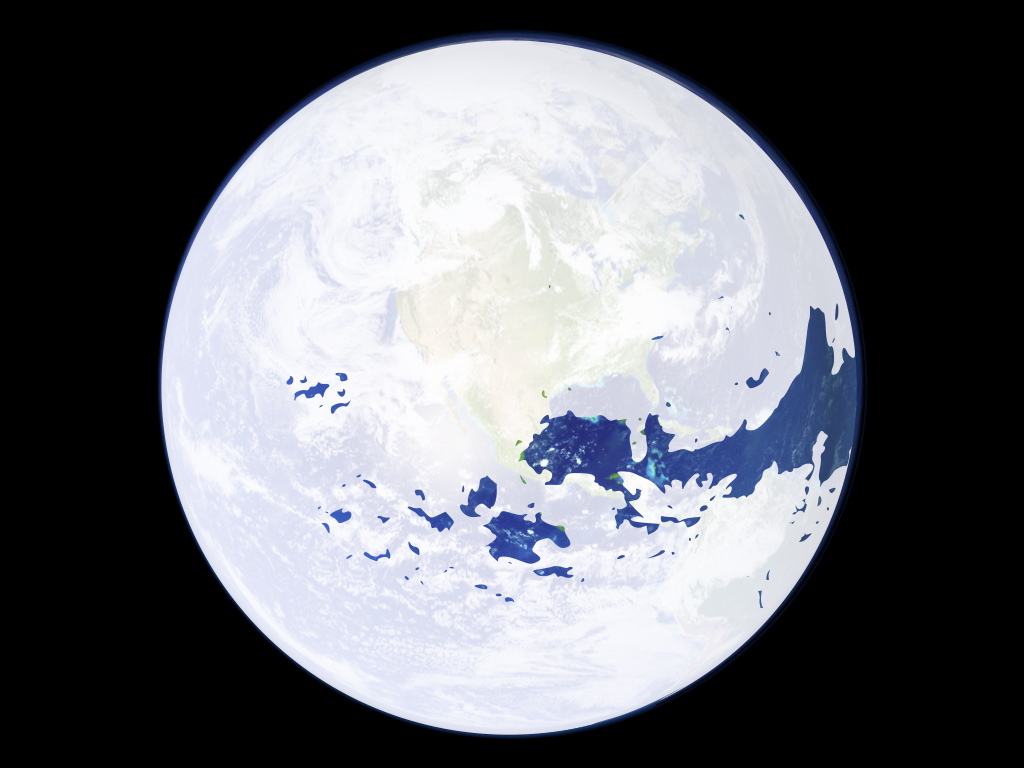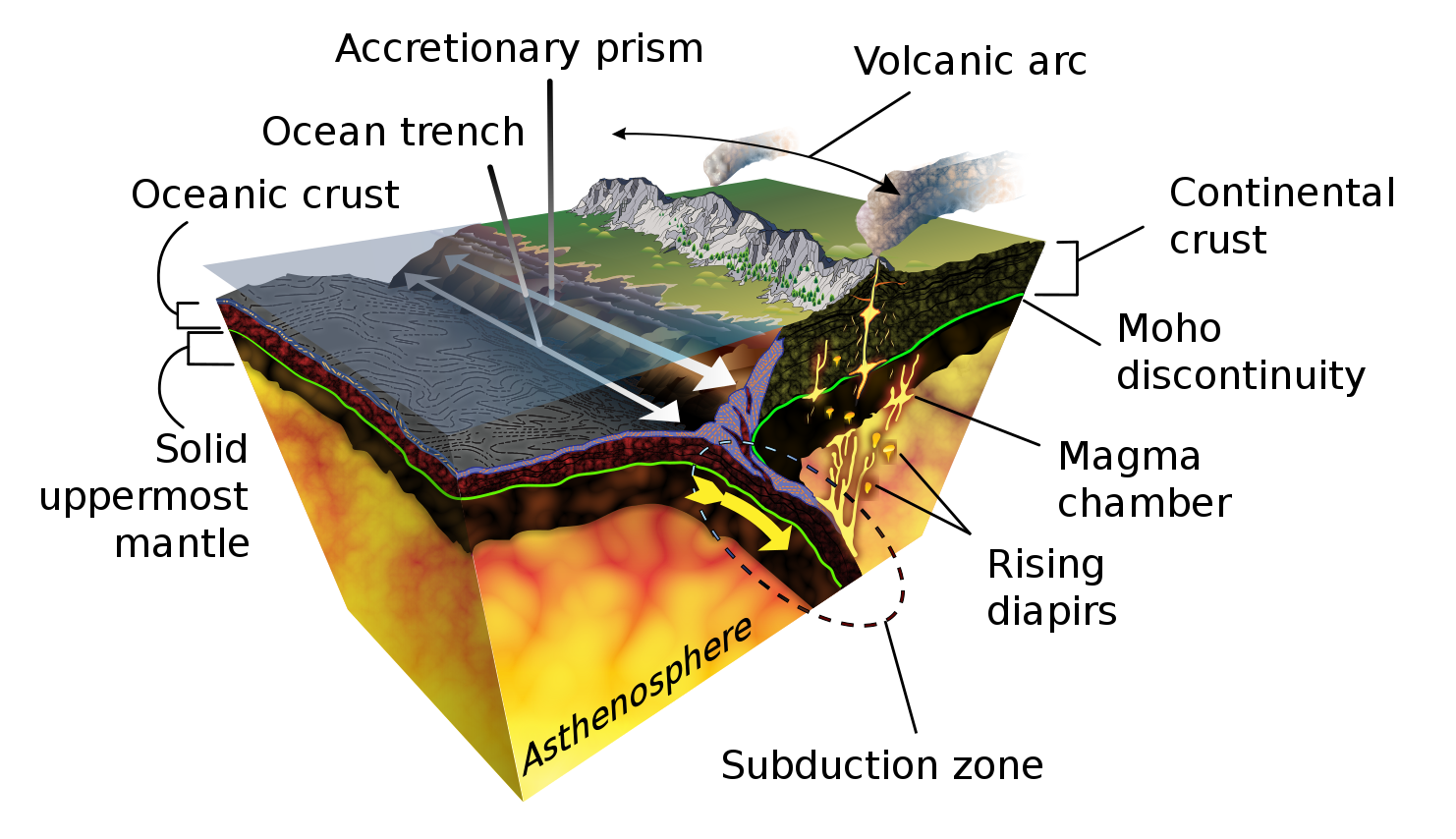Why Do We Need Snowball Events?71
It may not occur to people living in a high-tech modern society, but an improbable confluence of natural events in Earth’s past has made our comfortable lives possible. Scientists have learned how four finely tuned snowball events led to just-right plate tectonic activity, along with the timing of the Sun’s brightness, in what appears to be a supernatural arrangement to prepare our planet for advanced life.
Snowball events are epochs in Earth’s history when more than 80% of Earth’s surface becomes covered in thick sheets of ice (see figure 1). These epochs last for several million years.

Figure 1: Artist’s Depiction of Earth during a Snowball Event. Image credit: Hugh Ross
Some geologists make a distinction between snowball and slushball events. They define a snowball event as one where thick sheets of ice cover virtually all (98%+) of Earth’s surface and a slushball event as one where 80–90% of Earth’s surface is ice-covered while the remaining 10–20% is made of regions where the water is intermittently slushy or liquid. While the abundance and diversity of life precipitously drops during these events, it never disappears. The fact that life perseveres during these events argues in favor of slushball events. Nevertheless, I will use the term snowball event to refer to an epoch where thick ice sheets cover an excess of 80% of Earth’s surface.
Snowball Enigma
Snowball events present an apparent challenge to biblical creation models for life history on Earth. In Isaiah 45:18, Isaiah says of God:
He did not create it [Earth] to be empty; but formed it to be inhabited.
In Psalm 104:24 the psalmist declares:
How many are your works, Lord! In wisdom you made them all; the earth is full of your creatures.
Snowball events are erasures of Earth’s life. Why would God erase most life from Earth if his intent is to fill Earth with abundant, diverse life? A recent paper published in Nature provides several reasons why.1
Resolving the Snowball Enigma
Earth is the only known planet to manifest sustained plate tectonic activity. Without sustained aggressive plate tectonic activity, there is no possibility for advanced life. It takes sustained aggressive plate tectonic activity to create all the habitats that advanced life needs, to recycle the nutrients that advanced life needs, and to compensate for the ongoing brightening of the Sun. For readers interested in the specific reasons why, I address them in my book Improbable Planet.2
In the Nature paper, two geophysicists, Stephan Sobolev and Michael Brown, explain why snowball events are essential for maintaining aggressive plate tectonic activity. New crustal plates form at spreading zones (boundaries between plates where the plates are separating from one another). Then crustal plates are recycled back into Earth’s mantle at subduction zones (regions where one plate slides underneath another).
The primary driver of plate tectonics is subduction (see figure 2). Without subduction, plate tectonic activity will cease.

Figure 2: Subduction of One Tectonic Plate underneath Another. Image credit: K. D. Schroeder, Wikimedia Commons, subduction-en.svg
The rate at which subduction proceeds depends upon (1) the strength of the material comprising the descending plate, and (2) the strength of the material in the interface between the descending and overriding plates. Igneous rocks that characterize oceanic crust are dry (they contain few hydrated minerals) and strong. Thus, they manifest low subduction velocities. Sediments, on the other hand, are wet (they contain abundant hydrated minerals) and weak. They manifest high subduction velocities. Sediments at the juncture of two tectonic plates act as a lubricant, facilitating the sliding of one plate underneath another.
Snowball events dramatically enhance the weathering and erosion of emerging continents. This weathering and erosion dump a huge supply of sediments onto the continental shelves (the shallow-water seafloors off the coasts of continents). The load of sediments lubricates the interfaces between descending and overriding tectonic plates. And, in turn, the lubrication accelerates continental collisions, which lead to the formation of long ranges of high mountains like the Andes. The cycle continues as the formation of long ranges of high, steep-sloped mountains accelerates erosion, causing an even greater load of sediments to be delivered to the interfaces between tectonic plates.
Sobolev and Brown conclude in their paper that the snowball event that occurred 2.45–2.20 billion years ago and the briefer three snowball events that occurred 715–680 million years ago (the Sturtian glaciation), 650–635 million years ago (the Marinoan glaciation), and 579.9–579.6 million years ago (the Gaskiers glaciation) were crucial in sustaining the 3+ billion-year history of Earth’s plate tectonic activity. They also note that these snowball events played a critical role in the supercontinent cycle. In particular, the 2.45–2.20 billion-year-ago snowball event led to the formation of the Columbia supercontinent, and the three snowball events between 0.68 and 0.58 billion years ago led to the formation of the Gondwana supercontinent. Sobolev and Brown did not elaborate further in their paper about the implications for life, but I will.
Additional Snowball Events Benefits
Snowball events result in dramatic enhancements of atmospheric oxygen and reductions in atmospheric carbon dioxide. The 2.45–2.20 event is referred to as the Great Oxygenation Event. Here the atmospheric oxygen level rose from less than 0.01 percent to 1–2 percent. This oxygen rise, for the first time, permitted the existence of eukaroyotic microbes. The three later snowball events resulted in the atmospheric oxygen levels rising from about 1 percent first to 8 percent (575 million years ago), then shortly to 10 percent (543 million years ago). This much oxygen permitted the existence of animals.
Earth’s snowball events were perfectly timed. If they had occurred any earlier in Earth’s history, the Sun would have been too dim to prevent the entirety of Earth’s surface from being covered by thick sheets of ice. All life on Earth would have been exterminated and ice would have remained on Earth for much longer time periods. If the snowball events had occurred any later, the brighter Sun would have shortened the length of each event and limited the extent of the ice coverage. Much less atmospheric oxygen would have been produced and the induced level of plate tectonic activity would have been much lower. Consequently, the future abundance, diversity, and complexity of Earth’s life would have been much lower than what presently exists. In particular, the existence of human life and human civilization would have been rendered impossible.
Snowball events indeed are the greatest “catastrophes” Earth’s life has ever experienced. Without these catastrophes, however, the door to future advanced life on Earth would have been permanently closed. It is thanks to these exquisitely fine-tuned upheavals that we humans and our global human civilization are able to thrive. The timing and fine-tuning of Earth’s past snowball events testify of a Creator who has a purpose and a destiny for human beings.
Featured image credit: NASA/JPL/Eric Rignot
Check out more from Reasons to Believe @Reasons.org
Endnotes
- Stephan V. Sobolev and Michael Brown, “Surface Erosion Events Controlled the Evolution of Plate Tectonics on Earth,” Nature 570 (June 5, 2019): 52–57, doi:10.1038/s41586-019-1258-4.
- Hugh Ross, Improbable Planet: How Earth Became Humanity’s Home (Grand Rapids: Baker, 2016), 111–118, 143–164, https://shop.reasons.org/product/283/improbable-planet.





